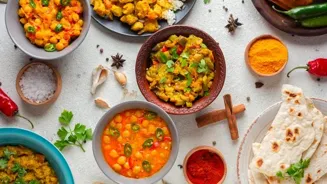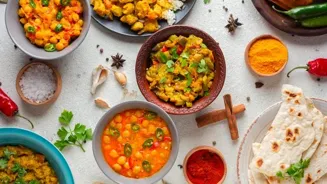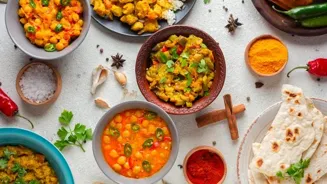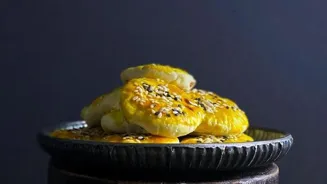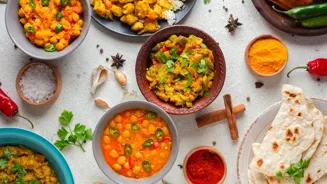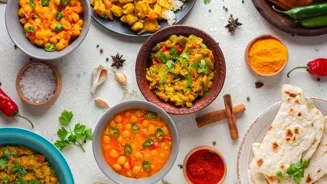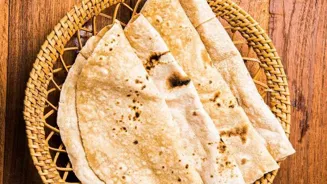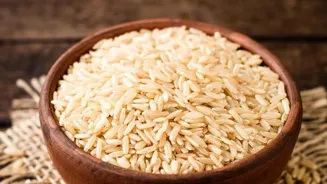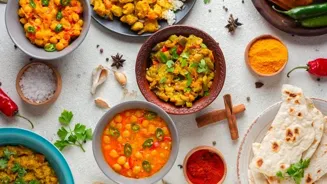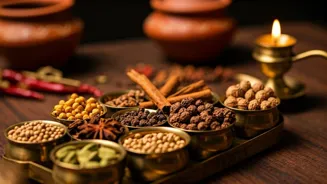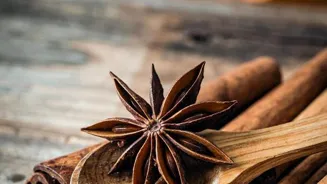Unlock the Secrets of Indian Cooking: 10 Common Mistakes & Solutions" - Delve into tips for perfect Indian dishes!
Indian cooking, with its rich tapestry of spices and diverse regional variations, is an art
form. From the simplest dal to the most elaborate biryani, each dish tells a story of tradition and flavour.
However, even seasoned home cooks can sometimes fall prey to common errors that can impact the final result. This article highlights 10 such mistakes and provides practical tips to avoid them, ensuring your Indian culinary adventures are always a delicious success.
Let's dive in and unlock the secrets to perfect Indian dishes!
Understand the importance of "bhunao" for flavorful Indian dishes
One of the most frequent errors is not understanding the role of "bhunao," or the slow-cooking and frying of spices. This step is crucial as it allows the spices to release their essential oils and aromas, creating a depth of flavour that is characteristic of Indian cuisine.

Many home cooks rush this process, leading to raw or undercooked spices that can taste bitter or muddy. The key is patience. Cook the spices over low to medium heat, stirring frequently, until they release a fragrant aroma and the oil begins to separate from the mixture.
This step might take time, but the results are worth it. This step is often skipped or hurried, leading to a dish that lacks the complex flavour profile that slow cooking imparts.
Using fresh spices is crucial for aromatic Indian dishes
Another pitfall is using stale spices. Spices lose their potency over time, and using old spices can result in a bland and uninteresting dish. Always check the expiry date of your spices and store them in airtight containers away from heat and light.
Ideally, buy spices whole and grind them yourself just before using for the freshest flavour. Freshly ground spices have a superior aroma and punch that will elevate your cooking. Remember, spices are the heart and soul of Indian cuisine so keeping them fresh is paramount.
Storing spices correctly prevents loss of aroma. By using fresh spices, any indian dish will be aromatic.
Avoid overcrowding the pan when cooking vegetables for perfect texture and flavor
Overcrowding the pan is another common mistake, especially when cooking vegetables. When too many vegetables are crammed into a pan, they steam instead of sear, resulting in a mushy and unevenly cooked dish. Cook vegetables in batches, ensuring each piece has enough space to brown and crisp up.
This technique ensures that the vegetables are cooked to perfection, retaining their texture and flavour. Don't overcrowd the food and ensure each portion is cooked in place of the other. Try making small portions and cook slowly. Searing vegetables makes for a rich flavour.
Pre-heating oil or ghee is crucial for proper cooking
Ignoring the importance of pre-heating oil or ghee is another oversight. Heating oil or ghee to the right temperature before adding ingredients is crucial for proper cooking. Oil that is not hot enough will result in the food absorbing too much oil and becoming greasy.
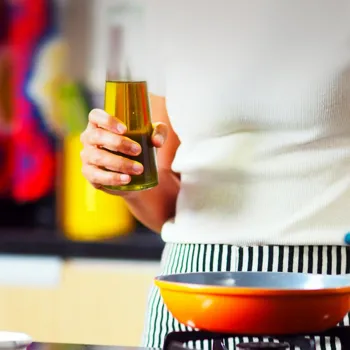
On the other hand, oil that is too hot can burn the ingredients before they are cooked through. Test the oil by dropping a small piece of the ingredient into it. If it sizzles immediately, the oil is ready. Making preparations for the food to be properly cooked.
Cooking on medium temperature ensures food is adequately cooked.
Taste and adjust seasoning while cooking for balanced flavors
Not tasting and adjusting seasoning throughout the cooking process is a significant blunder. Taste your dish at various stages of cooking and adjust the salt, sugar, and spices accordingly.
Remember, flavour evolves as the dish cooks, and what tastes balanced at the beginning may not taste balanced at the end. Seasoning is a matter of personal preference, so don't be afraid to experiment and adjust the flavours to your liking. Tasting also ensures there is a balance of flavours.
Every flavour should complement the other.
Adding water gradually is crucial for dish consistency
Adding water haphazardly is another common error. Adding too little water can result in a dry and burnt dish, while adding too much water can make the dish watery and bland. Add water gradually, as needed, and always use hot water to maintain the cooking temperature.
Remember, the goal is to achieve the right consistency without sacrificing flavour. Sometimes even tomatoes adds watery flavours. Don't add too much ingredients that could cause watering down of the dish. Balance is the key.
Cookware impacts cooking outcome; use the right vessel for each dish
Using the wrong kind of vessel can impact the outcome. The material, size, and shape of the cookware can all influence how a dish cooks. For example, a heavy-bottomed pan is ideal for slow-cooking dishes like dal and curries, as it distributes heat evenly and prevents burning.
A wok is perfect for stir-frying, as its sloping sides allow for quick and efficient cooking. A non-stick pan is useful for dishes that tend to stick, such as dosas and uttapams. Using the right vessel ensures the food's flavor is richer.
Balancing flavors in Indian food is key for a tasty dish
Not balancing flavours is a big mistake. Indian food is a delightful combination of spices. Therefore each flavour should complement the other. Overdoing a particular spice could ruin the whole dish. Balance the flavours well so that each flavour complements each other to form a tasteful dish.
Always ensure that each food has the proper balance of flavour.
Regional variations crucial in Indian cuisine for authentic flavors
Not factoring in regional variations can be a missed chance. Indian cuisine varies quite a bit and factors. In some places sugar is a must , whereas some like salt. Make sure to understand your region and what flavours are preferred.
Therefore, if you are missing out on it , the dish might not be as fulfilling as it is. Therefore , always have your background check right and what kind of dish you want to make.
Don't fear experimenting in Indian cooking, unlock new flavors
Being afraid to experiment is the final, and perhaps most important, mistake to avoid. Indian cooking is all about creativity and experimentation. Don't be afraid to try new spice combinations, use different vegetables, or adapt recipes to your own taste.
The best way to learn is by doing, so get in the kitchen and start experimenting! With practice, you'll develop a feel for the flavours and techniques of Indian cuisine and create dishes that are uniquely your own. Experimenting will unlock a new set of flavours for you.
